In the world of clothing mishaps, a frayed or damaged buttonhole can throw a wrench into your wardrobe plans. Mastering the art of buttonhole repair empowers you to transform clothing calamities into triumphs.
Fear not, as mastering the art of buttonhole repair can save your favorite garments and keep your style intact. Whether it’s a well-loved shirt or a cherished coat, learning how to repair a buttonhole is a valuable skill for any fashion enthusiast.
In this comprehensive guide, we’ll walk you through the process, providing clear and concise steps to revive and strengthen those vulnerable openings.
With a few basic tools and a bit of patience, you’ll soon be seamlessly stitching your way to a wardrobe free from buttonhole worries. Let’s embark on this sartorial journey and ensure that no loose thread stands between you and your impeccable sense of style.
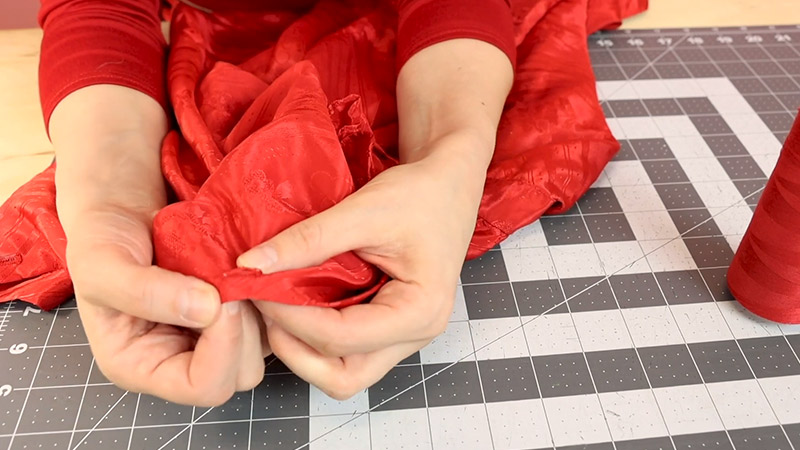
How to Repair a Buttonhole by Hand?
Repairing a buttonhole may seem daunting, but fear not. With a few simple steps, you can mend that frayed or damaged opening, extending the life of your garments. Let’s dive into a detailed guide on how to fix a buttonhole.
Assess the Damage
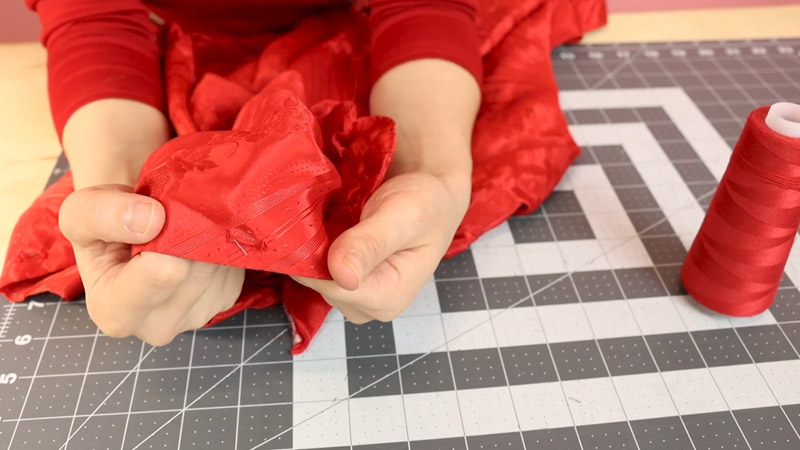
Before diving into the buttonhole repair process, evaluate the extent of the damage. Identify loose threads, frayed edges, or any structural issues. Understanding the problem will guide your approach to fixing it.
Remove Loose Threads
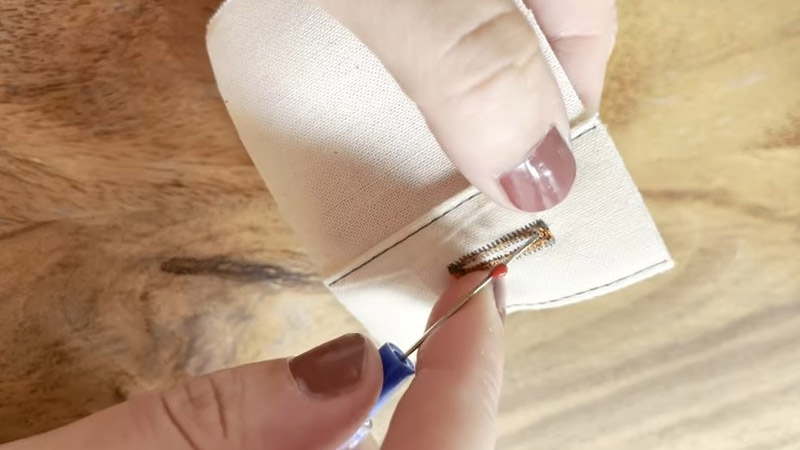
Carefully remove any loose threads from the damaged buttonhole. Use small scissors to trim frayed edges, creating a neat and even edge. To prevent further fraying, reinforce the edges of the buttonhole. Thread your needle and sew a line of small, tight stitches along the edges, securing the fabric.
Stitching Techniques
When it comes to learning how to repair a buttonhole, you’ll need to know some stitching tricks. Here’s how to repair a buttonhole by hand using various stitch techniques:
Patching
If the buttonhole damage is extensive, consider patching it. Cut a small piece of fabric matching the garment and place it behind the buttonhole. Stitch around the edges to secure the patch.
For extra durability, apply interfacing to the back of the fabric surrounding the buttonhole. This adds stability, preventing future damage.
Thread Selection
Choose a thread color that matches the garment. If in doubt, opt for a slightly darker shade, as it will blend well and add subtle reinforcement.
After stitching, secure loose thread ends on the inside of the garment. A few small knots will prevent unraveling.
Running Stitch
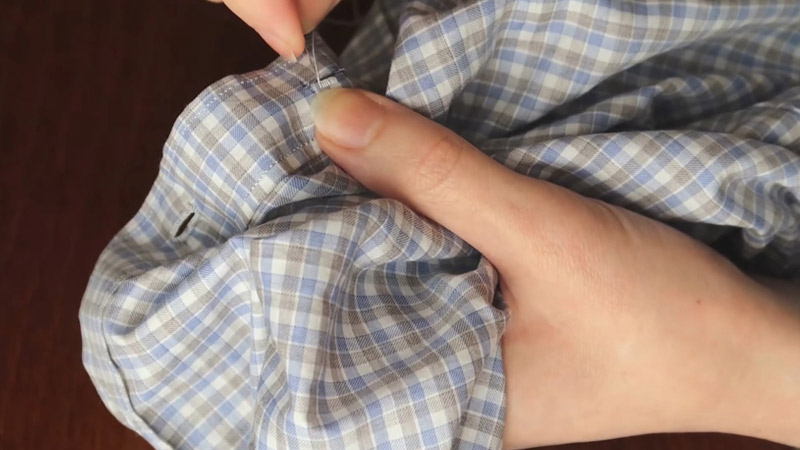
For minor damages, a simple running stitch can suffice. Insert the needle from the back to the front, creating even, closely spaced stitches along the buttonhole’s edge.
For more substantial repairs, consider a satin stitch. This involves sewing closely spaced parallel stitches over the damaged area, creating a dense covering for added strength.
Patching
If the buttonhole damage is extensive, consider patching it. Cut a small piece of fabric matching the garment and place it behind the buttonhole. Stitch around the edges to secure the patch.
For extra durability, apply interfacing to the back of the fabric surrounding the buttonhole. This adds stability, preventing future damage.
Thread Selection
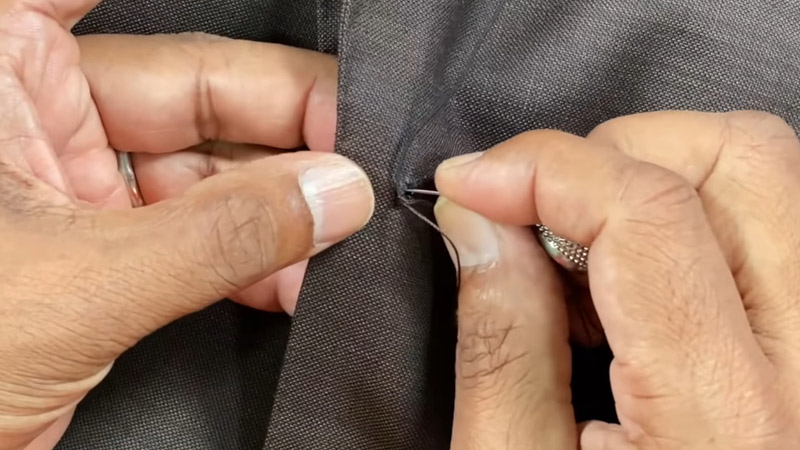
Choose a thread color that matches the garment. If in doubt, opt for a slightly darker shade, as it will blend well and add subtle reinforcement.
After stitching, secure loose thread ends on the inside of the garment. A few small knots will prevent unraveling.
Ironing
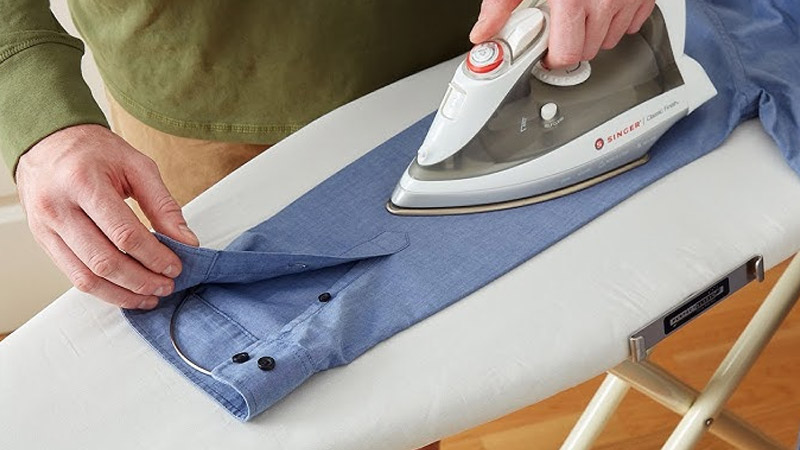
Iron the repaired buttonhole carefully. This not only smoothens the fabric but also sets the stitches, ensuring longevity.
If you’re new to buttonhole repair, practice on scrap fabric before tackling the actual garment. This builds confidence and hones your skills.
Prevention Tips
To avoid future buttonhole issues, reinforce new garments before wear. Apply fabric glue or clear nail polish along the buttonhole edges for added strength.
After repair, conduct a final inspection. Ensure the button can pass through the hole smoothly and that the repaired area looks seamless.
How to Fix a Ripped Buttonhole Using a Button Hole Repair Kit?
Repairing a ripped buttonhole with a buttonhole repair kit is a practical and straightforward task that can extend the life of your garments. Whether you’ve encountered a wardrobe malfunction or want to reinforce vulnerable areas preventively, these step-by-step instructions will guide you through the process.
Assess the Damage
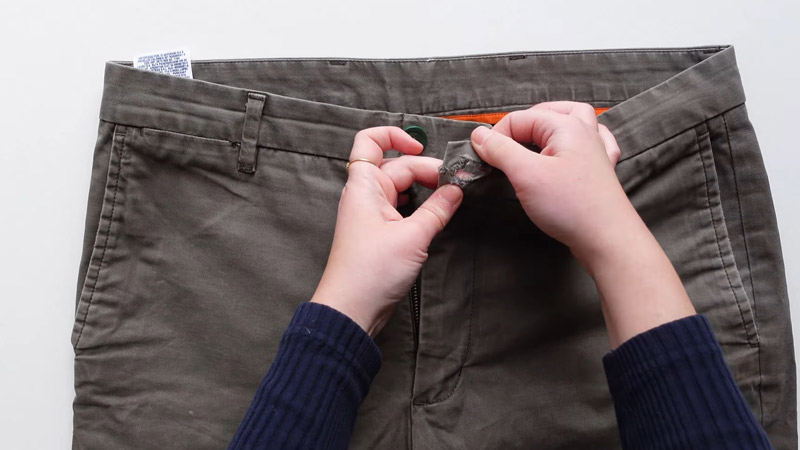
Begin by closely examining the ripped buttonhole. Identify loose threads, frayed edges, or any structural issues. Understanding the extent of the damage will help you tailor your repair approach.
Prepare the Kit
Gather the necessary tools from your buttonhole repair kit. These typically include iron-on patches or fabric, fabric glue, and needles. Having these tools at your disposal ensures a seamless repair process.
Trim Loose Threads
Carefully trim any loose threads around the ripped buttonhole using small scissors. Ensure you create a clean and even edge, setting the stage for a precise repair.
Apply Fabric Glue
If your buttonhole repair kit includes fabric glue, apply a small amount along the edges of the buttonhole. This adhesive serves a dual purpose: it helps secure the fabric in place and prevents further fraying. Be cautious not to use excessive glue, as it may seep through the fabric.
Position Iron-on Patch
For added reinforcement, especially when dealing with a substantial rip, position the iron-on patch provided in the kit behind the ripped buttonhole. Place the patch on the inside of the garment, ensuring it aligns with the damaged area. This patch will serve as an additional layer of support.
Iron the Patch
Follow the instructions provided with your buttonhole repair kit for ironing. Typically, you’ll place a cloth over the patched area and iron over it.
The heat activates the adhesive on the iron-on patch, bonding it securely to the fabric. This step not only mends the buttonhole but also adds durability to the repaired section.
Reinforce with Stitching
Although the iron-on patch provides substantial reinforcement, adding a layer of stitching enhances the overall strength of the repair.
Thread the needle with the matching thread from your kit and carefully stitch around the edges of the repaired buttonhole. This stitching not only ensures a secure mend but also contributes to the visual aesthetics of the repair.
Secure Loose Threads
After completing the stitching, secure the loose thread ends on the inside of the garment. Creating a few small knots prevents any unraveling and adds a finishing touch to your repair.
Final Inspection
Once you’ve completed the repair, conduct a final inspection. Check that the button can pass through the hole smoothly and ensure the repaired area looks neat and blends seamlessly with the surrounding fabric. This thorough examination ensures the longevity and functionality of your repair.
Follow Kit Instructions
Always adhere to any specific instructions provided with your buttonhole repair kit. Manufacturers may have unique recommendations based on the materials used in the kit, ensuring optimal results.
How to prevent buttonholes from damage?
Before you learn how to fix a frayed buttonhole, it’s best to learn the prevention methods. Preventing damage to buttonholes is a proactive approach to ensuring the longevity of your garments.
By adopting careful practices and employing preventive measures, you can significantly reduce the risk of buttonhole issues. Here’s a comprehensive guide on how to prevent buttonholes from damage:
Choose Quality Fabrics
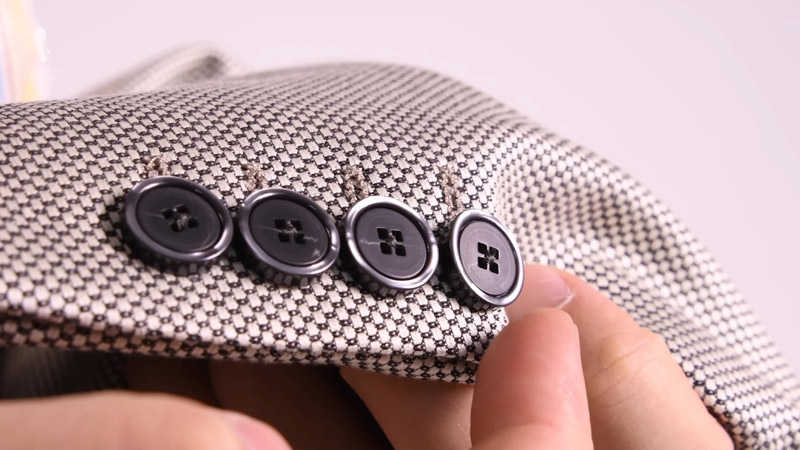
Opt for garments made from high-quality fabrics. Quality materials are less prone to fraying and can withstand regular use and washing without compromising the integrity of the buttonholes.
Reinforce New Garments
Before wearing new garments, reinforce the buttonholes. Apply a thin layer of fabric glue or clear nail polish along the edges of the buttonholes. This extra layer helps prevent fraying and adds durability.
Handle your garments with care, especially when buttoning. Avoid forcing buttons through tight or misaligned buttonholes, as this can cause unnecessary strain and lead to fraying over time.
Rotate Garments
Regularly rotate your wardrobe to distribute wear evenly among your garments. This prevents overuse of specific items and reduces the risk of buttonholes becoming worn or damaged from constant use.
Store your garments properly to prevent buttonhole damage. Avoid overcrowding in closets, and use padded hangers to maintain the shape of the garments. Proper storage reduces friction and stress on buttonholes.
Be Mindful of Accessories
Be cautious with accessories that may snag on buttonholes, such as jewelry, bags, or scarves. When wearing such items, take extra care to avoid catching them on the buttons or buttonholes to prevent damage.
Before putting on or removing garments, ensure there are no sharp objects, like pens or keys, in your pockets. These items can catch on buttonholes and cause damage during everyday activities.
Reinforce with Fabric Tape
For delicate fabrics or garments with thin buttonhole areas, consider reinforcing them with fabric tape. Apply a strip of fabric tape on the backside of the buttonhole to add strength without altering the garment’s appearance.
Incorporate regular checks into your garment care routine. Examine buttonholes for any signs of wear, loose threads, or fraying. Detecting issues early allows for prompt repair or reinforcement, preventing further damage.
Follow Care Instructions
Adhere to the care instructions provided by garment manufacturers. Different fabrics require specific care, and following these guidelines helps maintain the overall integrity of the garment, including the buttonholes.
Delicate garments with intricate buttonhole details benefit from hand washing. This gentle approach reduces the stress placed on buttonholes during machine washing and helps preserve their structural integrity.
Use Buttonhole Protectors
Invest in buttonhole protectors, small devices designed to shield buttonholes from wear. These can be especially useful for frequently worn garments, providing an extra layer of protection.
Excessive ironing, especially with high heat, can weaken fabrics and contribute to buttonhole damage. Use a moderate heat setting and consider ironing garments inside out to minimize direct exposure to heat.
Professional Alterations
When altering garments or having custom pieces made, opt for professional services. A skilled tailor can ensure that buttonholes are sewn with precision, minimizing the risk of premature damage.
Different fabrics have varying levels of durability. Educate yourself on the properties of the fabrics in your wardrobe to implement appropriate care measures and understand how to handle each material.
FAQs
Can I repair a frayed buttonhole without sewing skills?
Yes, you can use no-sew options like fabric glue or iron-on patches for a quick fix. However, learning basic sewing techniques will enhance your ability to make lasting repairs.
What’s the best way to prevent buttonholes from fraying?
To prevent fraying, reinforce buttonholes with fabric glue or clear nail polish before wearing. Additionally, avoid forceful buttoning, choose quality fabrics, and store garments properly.
Can I use any thread for buttonhole repairs?
It’s best to use thread matching the garment for a seamless repair. Choose a high-quality thread to ensure durability and longevity in the repaired buttonhole.
How often should I check my buttonholes for damage?
Regularly inspect buttonholes during garment care routines. Checking every few wears helps detect early signs of wear, allowing for timely repairs and preventive measures.
Are there alternatives to traditional buttonholes to prevent damage?
Yes, consider garments with alternative closures like snaps or magnetic buttons. These alternatives distribute stress differently and can reduce the strain on traditional buttonholes.
Conclusion
With patience and precision, the skill of repairing buttonholes becomes a testament to your craftsmanship and commitment to sustainable fashion. Mending a buttonhole is not just a practical skill; it’s a small triumph over wardrobe malfunctions.
Armed with the knowledge shared in this guide, you now possess the ability to breathe new life into your garments, extending their lifespan and preserving your favorite pieces. Remember, the key lies in patience and precision as you navigate the delicate dance of needle and thread.
As you embark on your buttonhole repair endeavors, embrace the satisfaction of restoring functionality and aesthetics to your clothing.
From here on, consider each mended buttonhole not just as a repaired flaw but as a testament to your craftsmanship. So, the next time a buttonhole unravels, you can confidently say, “I’ve got this!” Don’t fear and get started right away!
Leave a Reply